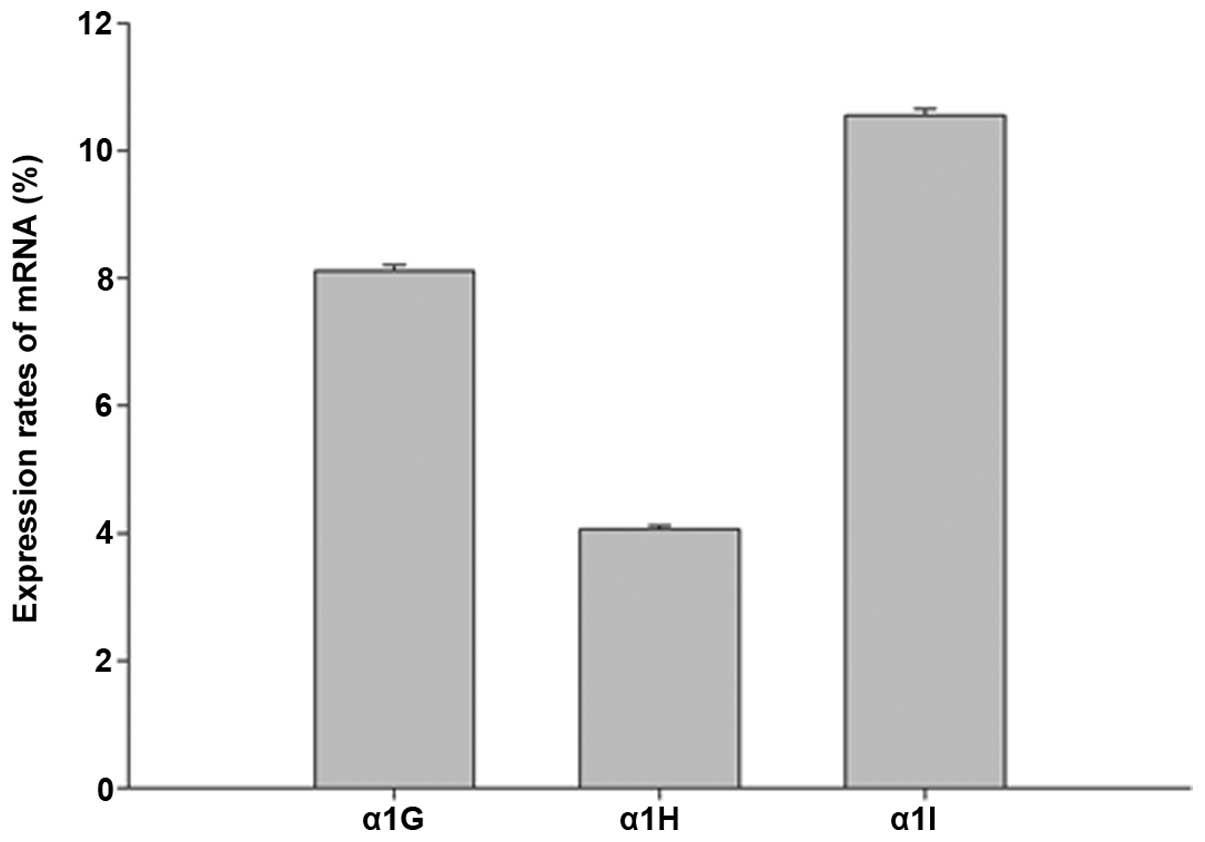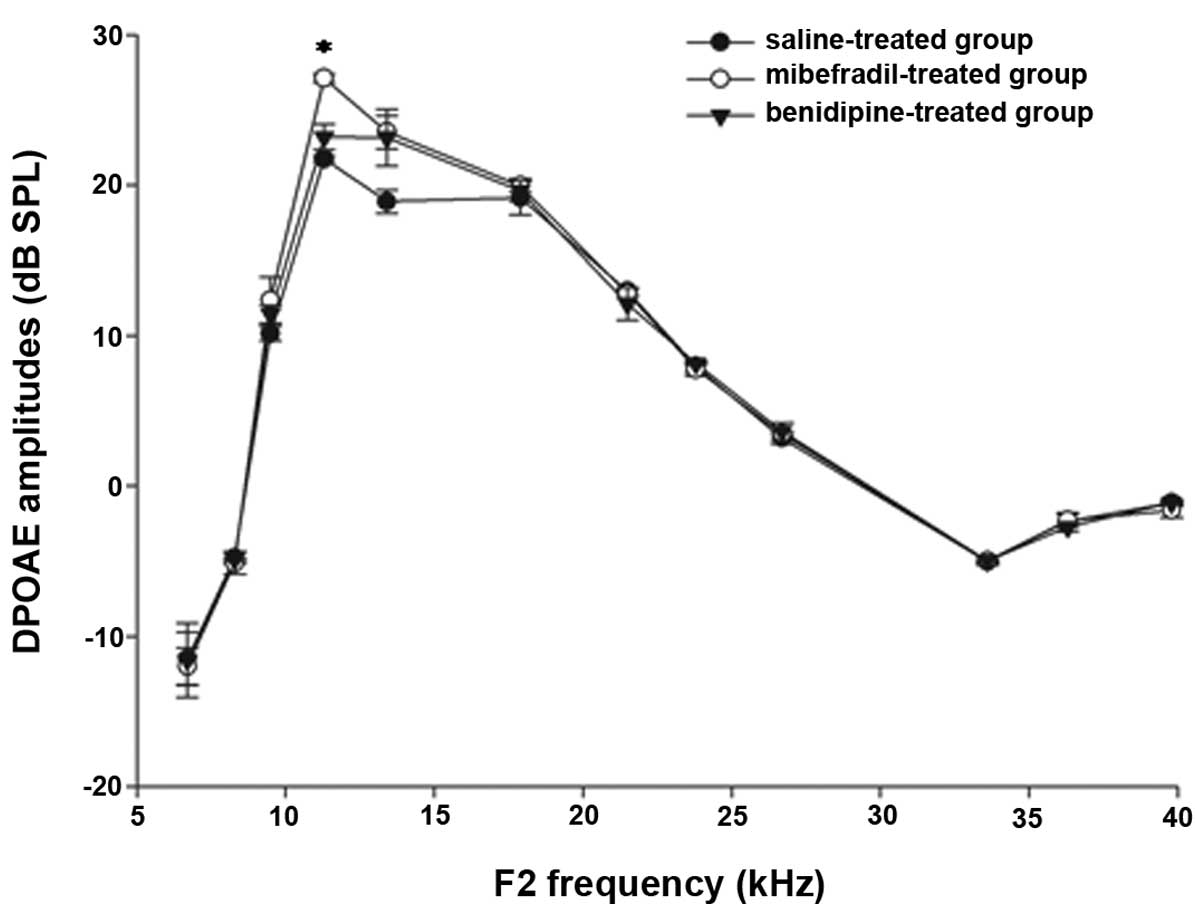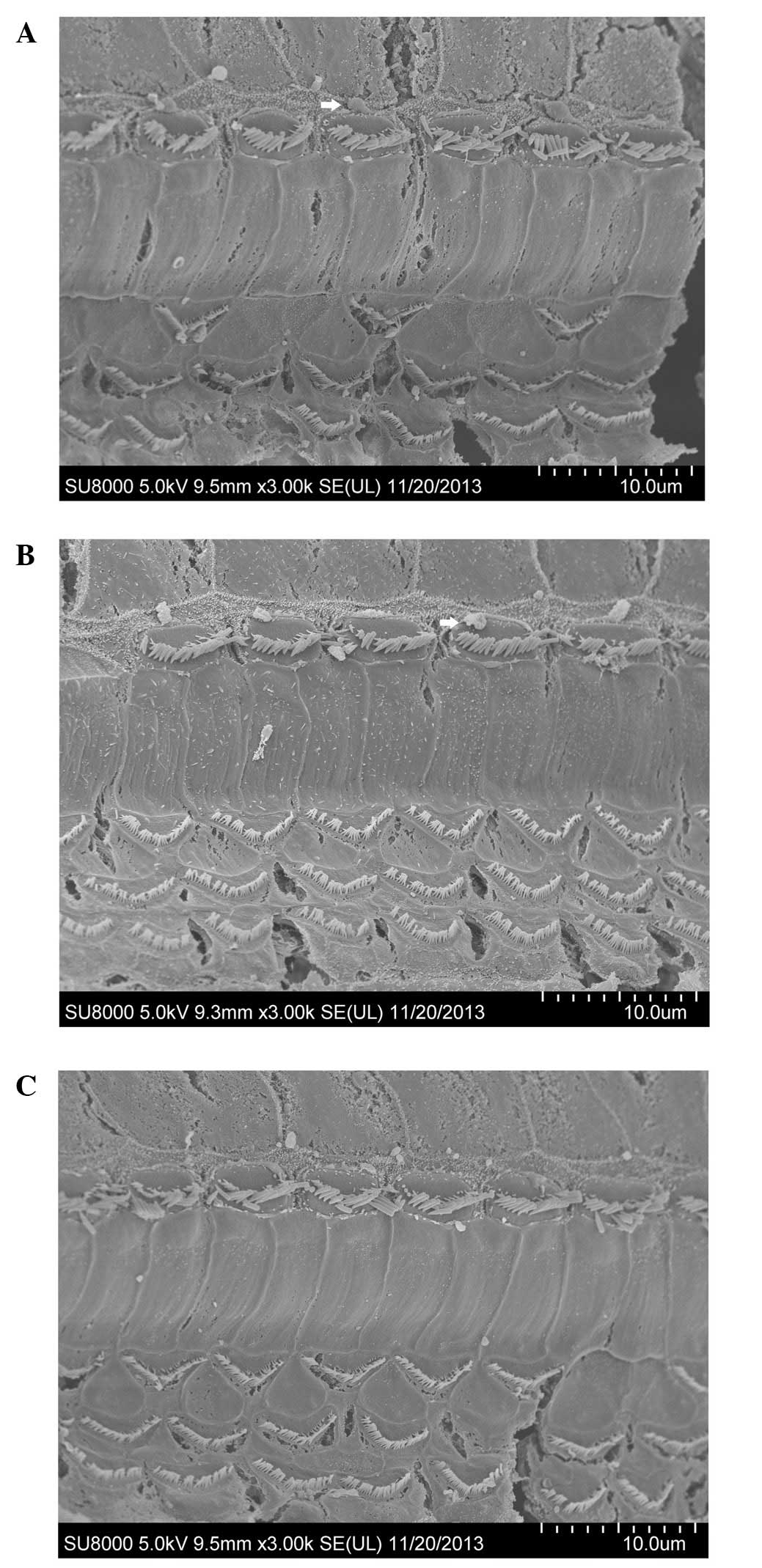|
1
|
Corso JF: Auditory processes and aging:
Significant problems for research. Exp Aging Res. 10:171–174. 1984.
View Article : Google Scholar : PubMed/NCBI
|
|
2
|
Olshansky SJ, Carnes BA and Cassel CK: The
aging of the human species. Sci Am. 268:46–52. 1993. View Article : Google Scholar : PubMed/NCBI
|
|
3
|
Gates GA and Mills JH: Presbycusis.
Lancet. 366:1111–1120. 2005. View Article : Google Scholar : PubMed/NCBI
|
|
4
|
Johnsson LG and Hawkins JE Jr: Sensory and
neural degeneration with aging, as seen in microdissections of the
human inner ear. Ann Otol Rhinol Laryngol. 81:179–193. 1972.
View Article : Google Scholar : PubMed/NCBI
|
|
5
|
Schuknecht HF and Gacek MR: Cochlear
pathology in presbycusis. Ann Otol Rhinol Laryngol. 102:1–16.
1993.PubMed/NCBI
|
|
6
|
Willott JF, Parham K and Hunter KP:
Comparison of the auditory sensitivity of neurons in the cochlear
nucleus and inferior colliculus of young and aging C57BL/6J and
CBA/J mice. Hear Res. 53:78–94. 1991. View Article : Google Scholar : PubMed/NCBI
|
|
7
|
Pickles JO: Mutation in mitochondrial DNA
as a cause of presbyacusis. Audiol Neurootol. 9:23–33. 2004.
View Article : Google Scholar : PubMed/NCBI
|
|
8
|
Trump BF and Berezesky IK: The role of
cytosolic Ca2+ in cell injury, necrosis and apoptosis. Curr Opin
Cell Biol. 4:227–232. 1992. View Article : Google Scholar : PubMed/NCBI
|
|
9
|
Orrenius S, McCabe MJ Jr and Nicotera P:
Ca(2+)-dependent mechanisms of cytotoxicity and programmed cell
death. Toxicol Lett 64–65 Spec No: 357–364. 1992. View Article : Google Scholar
|
|
10
|
Fridberger A, Flock A, Ulfendahl M and
Flock B: Acoustic overstimulation increases outer hair cell Ca2+
concentrations and causes dynamic contractions of the hearing
organ. Proc Natl Acad Sci USA. 95:7127–7132. 1998. View Article : Google Scholar : PubMed/NCBI
|
|
11
|
Li H, Liu H and Heller S: Pluripotent stem
cells from the adult mouse inner ear. Nat Med. 9:1293–1299. 2003.
View Article : Google Scholar : PubMed/NCBI
|
|
12
|
Levic S and Dulon D: The temporal
characteristics of Ca2+ entry through L-type and T-type Ca2+
channels shape exocytosis efficiency in chick auditory hair cells
during development. J Neurophysiol. 108:3116–3123. 2012. View Article : Google Scholar : PubMed/NCBI
|
|
13
|
Hafidi A and Dulon D: Developmental
expression of Ca(v)1.3 (alpha1d) calcium channels in the mouse
inner ear. Brain Res Dev Brain Res. 150:167–175. 2004. View Article : Google Scholar : PubMed/NCBI
|
|
14
|
Shen H, Zhang B, Shin JH, Lei D, Du Y, Gao
X, Wang Q, Ohlemiller KK, Piccirillo J and Bao J: Prophylactic and
therapeutic functions of T-type calcium blockers against
noise-induced hearing loss. Hear Res. 226:52–60. 2007. View Article : Google Scholar : PubMed/NCBI
|
|
15
|
Willott JF: Aging and the Auditory System:
Anatomy, Physiology, and Psychophysics. San Diego, CA: Singular
Publishing Group, Inc. 1–295. 1991.
|
|
16
|
Johnson KR, Erway LC, Cook SA, Willott JF
and Zheng QY: A major gene affecting age-related hearing loss in
C57BL/6J mice. Hear Res. 114:83–92. 1997. View Article : Google Scholar : PubMed/NCBI
|
|
17
|
Yu YF, Zhai F, Dai CF and Hu JJ: The
relationship between age-related hearing loss and synaptic changes
in the hippocampus of C57BL/6J mice. Exp Gerontol. 46:716–722.
2011. View Article : Google Scholar : PubMed/NCBI
|
|
18
|
Kujoth GC, Hiona A, Pugh TD, Someya S,
Panzer K, Wohlgemuth SE, Hofer T, Seo AY, Sullivan R, Jobling WA,
et al: Mitochondrial DNA mutations, oxidative stress and apoptosis
in mammalian aging. Science. 309:481–484. 2005. View Article : Google Scholar : PubMed/NCBI
|
|
19
|
Wu Z, Zhang J and Zhao B: Superoxide anion
regulates the mitochondrial free Ca2+ through uncoupling proteins.
Antioxid Redox Signal. 11:1805–1818. 2009. View Article : Google Scholar : PubMed/NCBI
|
|
20
|
Giacomello M, De Mario A, Primerano S,
Brini M and Carafoli E: Hair cells, plasma membrane Ca2+
ATPase and deafness. Int J Biochem Cell Biol. 44:679–683. 2012.
View Article : Google Scholar : PubMed/NCBI
|
|
21
|
Karlstad J, Sun Y and Singh BB: Ca(2+)
signaling: An outlook on the characterization of ca(2+) channels
and their importance in cellular functions. Adv Exp Med Biol.
740:143–157. 2012. View Article : Google Scholar : PubMed/NCBI
|
|
22
|
Eatock RA and Hurley KM: Functional
development of hair cells. Curr Top Dev Biol. 57:389–448. 2003.
View Article : Google Scholar : PubMed/NCBI
|
|
23
|
Spitzer NC: Activity-dependent neuronal
differentiation prior to synapse formation: The functions of
calcium transients. J Physiol Paris. 96:73–80. 2002. View Article : Google Scholar : PubMed/NCBI
|
|
24
|
Triggle DJ: The pharmacology of ion
channels: With particular reference to voltage-gated Ca2+ channels.
Eur J Pharmacol. 375:311–325. 1999. View Article : Google Scholar : PubMed/NCBI
|
|
25
|
Liu J, Niu YG, Li WX, Yuan YY, Han WJ, Yu
N, Yang SM and Li XQ: Interaction of a calcium channel blocker with
noise in cochlear function in guinea pig. Acta Otolaryngol.
132:1140–1144. 2012. View Article : Google Scholar : PubMed/NCBI
|
|
26
|
Kansu L, Ozkarakas H, Efendi H and Okar I:
Protective effects of pentoxifylline and nimodipine on acoustic
trauma in Guinea pig cochlea. Otol Neurotol. 32:919–925. 2011.
View Article : Google Scholar : PubMed/NCBI
|
|
27
|
Inagaki A, Ugawa S, Yamamura H, Murakami S
and Shimada S: The CaV3.1 T-type Ca2+ channel contributes to
voltage-dependent calcium currents in rat outer hair cells. Brain
Res. 1201:68–77. 2008. View Article : Google Scholar : PubMed/NCBI
|
|
28
|
Sandmann S, Spitznagel H, Chung O, Xia QG,
Illner S, Jänichen G, Rossius B, Daemen MJ and Unger T: Effects of
the calcium channel antagonist mibefradil on haemodynamic and
morphological parameters in myocardial infarction-induced cardiac
failure in rats. Cardiovasc Res. 39:339–350. 1998. View Article : Google Scholar : PubMed/NCBI
|
|
29
|
Yao K, Nagashima K and Miki H:
Pharmacological, pharmacokinetic and clinical properties of
benidipine hydrochloride, a novel, long-acting calcium channel
blocker. J Pharmacol Sci. 100:243–261. 2006. View Article : Google Scholar : PubMed/NCBI
|
|
30
|
Kemp DT: Otoacoustic emissions, their
origin in cochlear function and use. Br Med Bull. 63:223–241. 2002.
View Article : Google Scholar : PubMed/NCBI
|
|
31
|
Spongr VP, Flood DG, Frisina RD and Salvi
RJ: Quantitative measures of hair cell loss in CBA and C57BL/6 mice
throughout their life spans. J Acoust Soc Am. 101:3546–3553. 1997.
View Article : Google Scholar : PubMed/NCBI
|

















